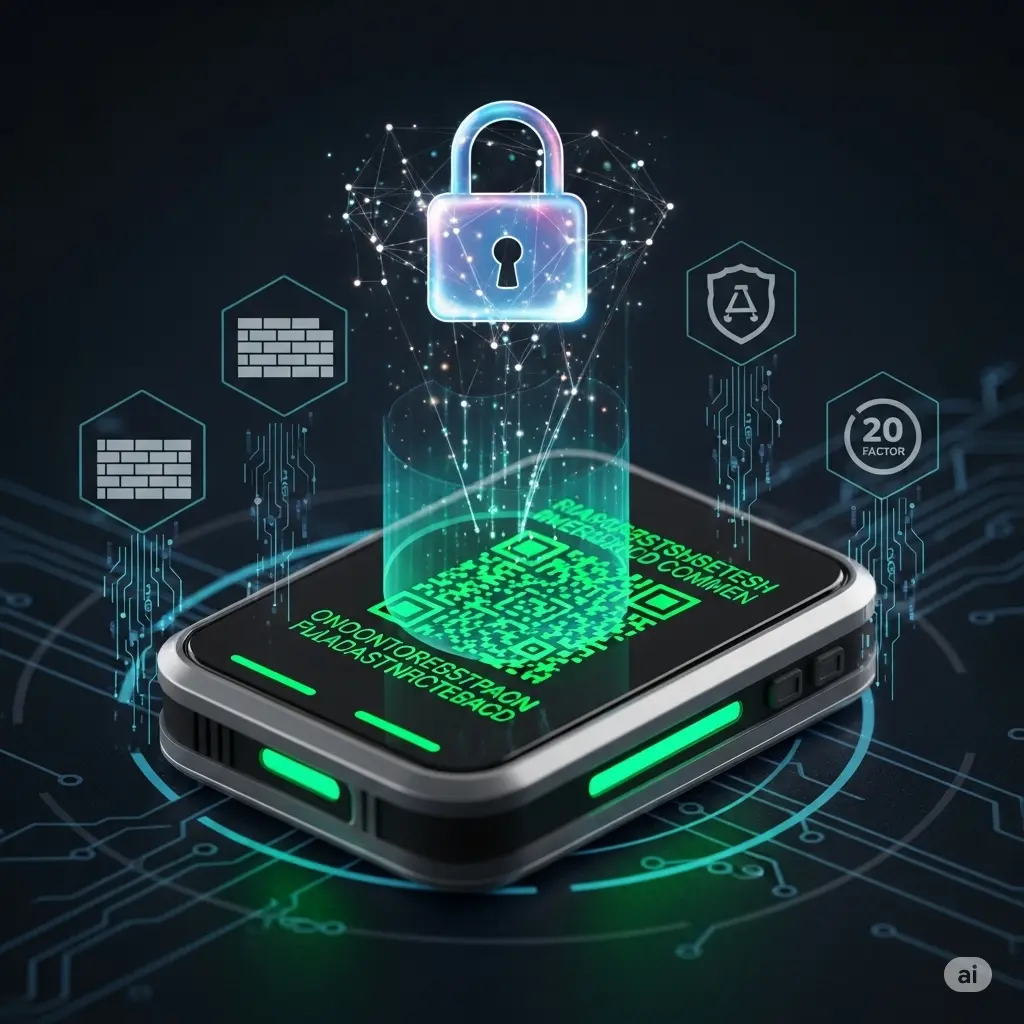A Secure Wallet Is a Must for Crypto Investors
In today’s fast-paced cryptocurrency world, security is more important than ever. A Secure Crypto Wallet is not just a convenience—it’s a necessity. Whether you’re a seasoned investor exploring DeFi or a beginner diving into Web3 and NFTs, safeguarding your digital assets starts with choosing the right wallet.
At Global Crypto Sports, we bring you crypto news, insights, and top-tier guidance. In this post, we’ll cover everything you need to know about building and maintaining a secure crypto wallet—from cold wallets and hot wallets to hardware and mobile wallets. We’ll define essential terms, consider real-world case studies, weigh pros and cons, and outline clear, actionable advice for beginners and intermediates alike. You’ll also find an FAQ section to answer your most pressing questions.
Let’s dive in and make sure your crypto journey is both profitable and secure.

What Is a Crypto Wallet—and Why Does Security Matter?
What Is a Crypto Wallet?
- A crypto secure wallet is a digital or physical tool that allows you to store, send, and receive cryptocurrencies.
- Importantly, wallets don’t hold the coins—you hold the private keys, which give you access to your assets on the blockchain.
- Think of your wallet as a password manager for money—without control of your keys, you don’t control your funds.
Key Terms (Brief Definitions)
Before diving deeper, here are some foundational terms:
- Blockchain: A decentralized, digital ledger that records all cryptocurrency transactions across a distributed network of computers.
- DeFi (Decentralized Finance): Financial services built on blockchain (e.g., lending, borrowing, trading), without central intermediaries like banks.
- Web3: The next evolution of the internet—where decentralized networks (like blockchain) reshape how we build apps, socialize, and exchange value.
- Decentralized Wallet: A wallet where you hold your own private keys—opposite of centralized exchange wallets or custodial solutions.
Why a Secure Crypto Wallet Is Essential Right Now
- Rise of cyberattacks – High-value hacks and exploits target exchanges and wallets alike.
- Proliferation of DeFi scams – Fake interfaces, phishing attacks, and poor contract audits leave investors vulnerable.
- Regulatory shifts – Governments worldwide, including pressure on exchanges, highlight the importance of self-custody via secure wallets.
- Bull market risks – As crypto prices surge, potential gains attract bad actors looking to exploit insecure wallets.
So, investing time in securing your crypto wallet now saves you heartache later and ensures you’re prepared for whatever the market brings.
Types of Crypto Wallets—A Comparative Breakdown
This section introduces the different types of wallets, highlighting their strengths and trade-offs.
Hot Wallets (Software & Mobile)
Hot wallets are always connected to the internet. Examples include:
- Mobile wallet apps (e.g. Trust Wallet, MetaMask mobile)
- Desktop wallets (e.g. Exodus, Electrum)
- Web browser extensions (e.g. MetaMask, WalletConnect)
Pros:
- Highly convenient for frequent use and quick transactions.
- User-friendly, with intuitive interfaces.
- Easy to integrate with DeFi, Web3 apps, and marketplaces.
Cons:
- More exposed to online threats—phishing, malware, and hacks.
- Risk of device compromise or accidental key leaks.
Cold Wallets (Hardware & Paper)
Cold wallets stay offline, increasing security. Subtypes include:
- Hardware wallet (e.g. Ledger Nano S/X, Trezor)
- Paper wallet (printout of your private key/seed phrase)
- Air‑gapped offline devices (completely disconnected machines)
Pros:
- Best crypto wallet 2025 candidates for security.
- Immune to online hacks when properly stored.
- Ideal for long-term holding or large balances.
Cons:
- Less convenient—requires physical access or device connection.
- Risk of losing or damaging the device/backup.
- Costs for hardware units.

Real‑World Case Studies: The Importance of Wallet Security
Case Study 1: The Mt. Gox Fallout
Back in 2014, Mt. Gox, one of the largest exchanges, suffered a devastating hack that resulted in the loss of 850,000 BTC. Users who stored funds directly on the exchange lost them entirely—highlighting centralized custody risk. Those who held funds in cold wallets were safe.
Case Study 2: The Ledger Breach (2020)
Ledger’s online store was compromised, exposing customer addresses—but not keys or funds. Strong hardware wallet design kept funds safe. This incident underscores that even trusted brands can face breaches without endangering assets if crypto wallet security is robust.
Case Study 3: Phishing Attacks on Hot Wallets
Many users have fallen prey to phishing sites mimicking MetaMask or DeFi platforms. One common trick: users enter their seed phrase into a fake site and immediately lose all funds. Educating oneself on spotting phishing is as essential as choosing the right wallet.
Benefits, Risks, and Pros & Cons Summary
Benefits of Using a Secure Crypto Wallet
- Full control of private keys and funds.
- Protection from exchange hacks or collapses.
- Seamless integration with DeFi, Web3, and dApps while using hot wallets.
- Enhanced safety via cold wallets for long-term storage.
Risks if You Don’t Use a Secure Wallet
- Loss through exchange hacks or scams.
- Loss due to phishing, insecure backups, or malware.
- No recovery if custody is lost—especially when seed phrases are misplaced.
Pros & Cons Table
| Wallet Type | Pros | Cons |
|---|---|---|
| Hot Wallet | Convenient, accessible, DeFi‑ready | Vulnerable to hacks, phishing, device malware |
| Cold Wallet | Excellent security, offline key storage | Less convenient; device loss/backup risks |
| Hybrid Approach | Balances access with safety | More complex setup; needs user discipline |
Actionable Advice for Beginners & Intermediate Investors
1. Choose the Right Wallet Type
- For daily transactions or DeFi, a well-protected hot wallet can work.
- For long-term storage, invest in a trusted hardware wallet.
- Maintain a hybrid strategy: a small amount in a hot wallet, the majority in a cold wallet.
2. Prioritize Crypto Wallet Security
- Always buy hardware wallets from official sources.
- Keep your device firmware updated.
- Never share your seed phrase—not even with “support”.
- Use unique, strong passwords for wallets and associated email accounts.
- Enable two-factor authentication (2FA) for any linked accounts.
3. Backup & Redundancy
- Write your seed phrase on paper and store it securely (e.g., safe, safe deposit box).
- Consider metal backups for long-term resilience (e.g., crypto backup plates).
- If using mobile or desktop wallets, back up the wallet file or mnemonic.
4. Learn to Spot Scams
- Always check the URL to ensure it’s the official site—no typos or suspicious characters.
- Bookmark legitimate wallet or exchange websites.
- Be cautious of unsolicited links or downloads.
- Never enter the seed phrase into any website—legitimate wallets never ask for that online.
5. Regularly Audit Your Setup
- Test your backups with a “fire-drill” – send a small amount to a new wallet using your backup, restore, and verify access.
- Review connected dApps and revoke permissions from unused ones (especially in DeFi environments).
6. Stay Informed via Global Crypto Sports
- Follow trusted sources like Global Crypto Sports for current news on exploits, software updates, firmware alerts, and best practice changes.
- Subscribe to email newsletters or RSS feeds for wallet advisories and security alerts.
Beginner-Friendly Questions to Engage You
- Which wallet type suits me best—hot or cold?
- How do I back up my mobile wallet safely?
- What’s the difference between hardware and paper wallets?
- How do I avoid phishing and fake wallet apps?
- Is a decentralized wallet safer than an exchange’s wallet?
- Can I recover funds if I lose my hardware wallet?
Each of these questions will be answered below.
FAQs – Frequently Asked Questions
- What is the best crypto wallet 2025?
The “best” crypto wallet varies by use case. Many security-conscious investors favor hardware wallets like Ledger Nano X or Trezor Model T for cold wallet storage. For usability, mobile wallets linked to browser extensions serve daily needs. The key is choosing a wallet that supports your usage while maximizing crypto wallet security. - What is the difference between hot and cold wallets?
- Hot wallets are connected to the internet (e.g., mobile apps, browser-based wallets). They’re convenient—but more vulnerable.
- Cold wallets (e.g., hardware, paper wallets) are offline. They require manual transactions and physical safekeeping but offer far superior protection.
- How do I back up my wallet?
- Write the seed phrase (12/24 words) on paper or metal.
- Store backups in secure locations (safe, bank).
- Consider multiple backups in different secure places.
- Regularly test restoring your wallet with a backup.
- What makes a wallet “secure”?
A Secure Crypto Wallet ensures your private keys are safe from hackers, phishing, and loss. Security comes from offline storage (cold security), strong backups, hardware protections (PIN, passphrase), and user vigilance. - Can I recover my funds if I lose my hardware wallet?
Yes—if you still have your backup seed phrase or recovery key. The hardware device can be replaced and your funds restored on a new device. - Are decentralized wallets safer than exchange wallets?
Decentralized wallets give you full control of your keys and assets—so yes, they’re typically safer. But that responsibility also means if you lose your keys, you lose access to your funds. - How to avoid phishing attacks?
- Only use official wallet sites or apps.
- Bookmark genuine URLs.
- Do not click on unknown links.
- Watch for misspellings or odd domain names.
- Never enter your seed phrase on any site.
Real-World Example (Beginner to Intermediate)
Imagine you have 2 ETH for active trading and 5 ETH for long-term holding.
- Hot Wallet Setup: Use a mobile wallet like MetaMask for the 2 ETH. Store it securely with a strong password and optional extra passphrase. Add only what you need for daily use.
- Cold Wallet Setup: Buy a hardware wallet (e.g., Trezor Model T). Initialize it, generate seed phrase, and store securely. Transfer 5 ETH there. You’re now safe from hacks targeting mobile or desktop.
- Backup Plan: Write your seed phrase for the hardware wallet onto a metal plate and store it in a waterproof, fireproof safe.
- Integration with dApps: When you want to invest in a DeFi project, connect your hardware wallet via your browser interface—but confirm transactions on the device itself so that malicious websites can’t trick you.
- Recovery Test: Once a year, use your backup phrase to restore the wallet on a separate device (with no funds) to ensure the backup works.
This approach demonstrates how beginners and intermediate users can split responsibilities: convenience vs security.
Further Security Tips
- Use passphrases in addition to your seed phrase for multilayer protection.
- Enable multi-signature (multi-sig) wallets for shared control among parties.
- Consider air-gapped lifelong devices for very high-value holdings.
- Keep crypto and backups off internet-connected cloud storage—not even in encrypted files.
- Revoke dApp permissions after each use to limit exposure to vulnerabilities.
Conclusion
A Secure Crypto Wallet isn’t a side project—it’s the cornerstone of safe crypto investing. From understanding key terms like blockchain and DeFi to choosing the right wallet type, protecting private keys, running backups, and staying vigilant—you build your security stack step by step.
At Global Crypto Sports, we empower you with what’s happening in the global crypto sphere—market trends, security insights, wallet reviews, and emerging threats. Bookmark our site, subscribe to updates, and never miss a beat.
Your crypto journey deserves both opportunity and protection. Take action today: assess your current wallet strategy, reinforce it with cold storage if needed, secure your seed backups, and stay informed. Share this post with friends and fellow crypto enthusiasts who want to invest wisely and securely.
Stay safe, invest smart, and let the future of decentralized finance work for you.
